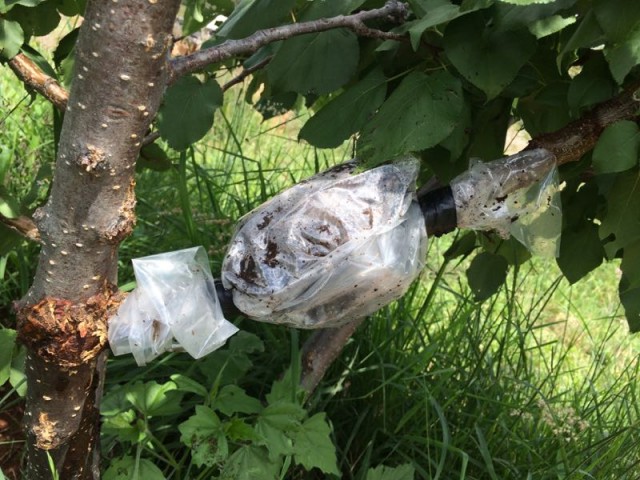
There are many ways to grow trees, depending on which type you’re talking about, and Abe has been trying them all.
Planting from seed is slow, but effective, for the ones that come true (are like their parents). This is generally the method we choose for the native trees, which we plant mainly to reforest our hill. For example, last year, when the oaks produced a lot of acorns, Abe and the boys walked all over the property planting seeds along the contours. Not all of these will make it, but some will, with no further effort or water from us. Another good reason for planting seeds is when you can’t find the live plant – ordering a seed online is sometimes the only way we’ll find some of the varieties that we want in our forest garden.
Another form of propagation is to take cuttings and root them. We’ve had some success with this method, but not as much as we would like. Abe has made a propagator, but it is still a work in progress, ironing out kinks in both temperature and humidity control. It’s faster than seeds, but involves quite a bit of time and care. We plan to build a greenhouse porch onto the house at some point, and that space will be almost entirely dedicated to our budding nursery (though a spot will be saved for some chairs and hammocks!).
We also have trees that produce shoots from their roots. We have dug these up and put them in pots. We’re not entirely sure what they are, as we bought the trees originally from a nursery and they may have used a different root stock than the tree that grew. If this is the case, we will just draft the variety we want onto this root stock, as they did.
[flickr_set id=”72157656739995559″]
Air-layering is the latest method that we’re trying out. You basically cut the bark off a limb, add root hormone to the wound, and surround it with moist peat moss. Roots will form within the ball of peat moss and you can then cut the limb off the tree and plant it. The huge benefit of this system is that you can combine your pruning with producing more trees. If you have to prune a large limb, you also get to start off with a pretty big tree. Air layering also has the benefit of starting with mature trees, so there is no waiting for fruit, like with seeds.
The other day, Abe did a test on two trees, an apricot and a mulberry. It’ll take a couple of months to see how it works, but if it does, we will be air-layering all over the place! We’ve already come up with a few ways to improve our technique, and once we’ve got it all perfected, we’ll do a full how-to.
Categories
Submit a Comment